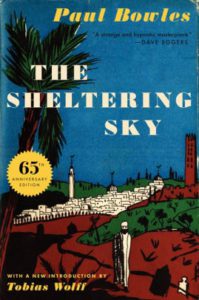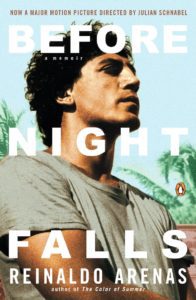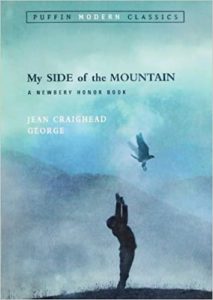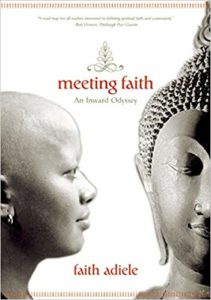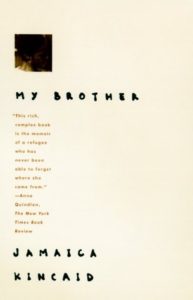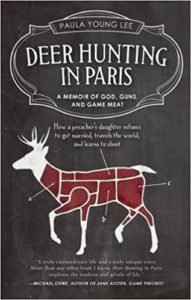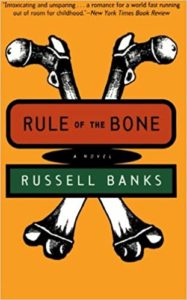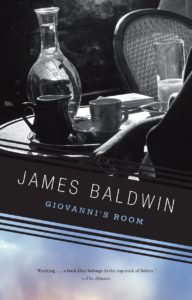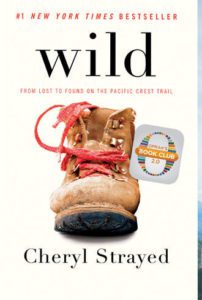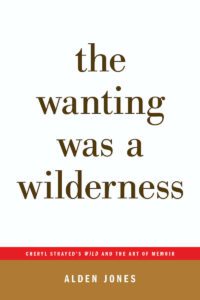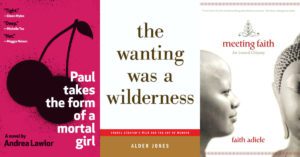
Not long after the start of the COVID-19 quarantine I became obsessed with tricked-out Sprinter vans. Some mind-reading Facebook algorithm recognized a desire in me at the itch stage and delivered to my feed a photo of a young woman on a bed, lounging beneath reclaimed-wood cabinetry, gazing out of the open back doors of her vehicle over in a sprawling mountain view. An adorable kitchen included two burners, a sink, and a mini-fridge. Somewhere, cleverly disguised as a bench, was a “cassette” toilet. All inside a Mercedes Sprinter van that could fit into a parking spot.
I have three children and van conversions aren’t cheap. I am not actually a candidate for “van life.” Nevertheless, I became fixated on the details of my imaginary customized van, poring over YouTube videos and used car sites. If I had access to this miniscule mobile home, I could get the thing I really wanted—which was to run away from my life.
I’d done it once, when I was nineteen: I’d checked out of my regular life to spend eighty-five days in the woods. When the pandemic drove us all inside I’d just finished writing a book about that time, a wilderness memoir that was also an analysis of Cheryl Strayed’s Wild. I’d been ruminating for a while on escape, and also on how literature about a journey can be its own getaway car. If you can’t do it, imagining doing it helps.
While for some readers difficult times might call for the total escapism of science fiction or a fantastic world far removed from our own, I’ve found myself most drawn to the narratives of those escaping their lives in a literal way, moving from one geography towards another. In some of these stories, escape is a voluntary move toward self-understanding; in others, it is an act of defiance and liberation. Like my van-conversion dreams, the books below touch on the human impulse to pack up and pick a direction, and if you spend enough time in these stories, you can close your eyes and see the road.
***
The Sheltering Sky by Paul Bowles
Disillusioned with New York society life after World War II, Port and Kit travel to North Africa to get a fresh look at the world and mend their marriage. The deeper into their travels the darker things get, until Kit is finally forced to navigate an unfamiliar world on her own. Bowles wrote this book after settling in Tangier, where he lived there for the last fifty-two years of his life; his devotion to the character of North Africa is unmistakable.
Paul Takes the Form of a Mortal Girl by Andrea Lawlor
This queer AF adventure novel follows Paul, a twenty-three-year-old queer theorist who can morph his body and gender at will, from Iowa City to Chicago to Provincetown to San Francisco. It is equal parts pornographic and hilarious, and Lawlor’s rendering of the early 90s (Patrick Nagel prints! Answering machines!) is spot on.
“Going it Alone” by Rahawa Haile
Rahawa Haile published this 2017 essay about hiking the Appalachian Trail as a solo black woman for Outside magazine. Haile chronicles hiking through campgrounds “swarming with RVs flying Confederate flags,” blackface soap in a general store, and regular interrogations about where she is from (because, as one white hiker says to her face, “blacks don’t hike”). The essay went viral, and Haile was quickly contracted to write a book about her through-hike; In Open Country is scheduled for 2021.
Before Night Falls by Reinaldo Arenas
In the autobiography he wrote not long before he died in New York, Reinaldo Arenas tells the story of life as one escape after another: from poverty; from the compulsory ideology of Fidel Castro; from prison, for the crime of being gay; and when there seems to be no other choice, from the island of Cuba. Before Night Falls is nothing short of an odyssey, freedom its ultimate subject.
My Side of the Mountain by Jean Craighead George
I recently bought this audiobook for my nine-year-old son, wondering if it would hold up, since the last time I’d read it I was ten myself. I wound up snuggling up next to my son for several consecutive bedtimes, once again completely absorbed in the story of the twelve-year-old Sam as he runs away from his family in New York City to live alone in the open nature of the Catskill Mountains. Sam trains a peregrine falcon he named Frightful, forages for food, and sleeps in a hollowed-out tree. As magical and inspiring a story as it was when I was a kid.
Meeting Faith: The Forest Journals of a Black Buddhist Nun by Faith Adielé
Burned out by the demands of Harvard, Faith Adielé retreats to northern Thailand, where she grows more serious about studying Buddhism and decides to become temporarily ordained as a nun. But she “nurses anger” and “despises tofu,” and wonders how her ambivalence will ever enable her to be a source of wisdom for others. She is ultimately the first black woman to be ordained in the Theravada Buddhist forest community.
My Brother by Jamaica Kincaid
Jamaica Kincaid left Antigua in 1965 to work as a nanny in the US, and much of her early oeuvre might find its way to this list. My Brother takes place after Kincaid has lived many years in Vermont and returns to Antigua to bring medicine and supplies to her sick brother, who has been left to die in a remote hospital wing for people with AIDS. It’s a story with a dramatic twist or two, and one that raises considerations of what Kincaid’s life might have looked like had she not left Antigua.
Deer Hunting in Paris: A Memoir of God, Guns, and Game Meat by Paula Lee
Paula Lee grew up in Maine, the daughter of Korean-born parents and a Methodist minister dad. At the age of eight she proved she was going to follow her own rules; one day, she decides to stop eating meat just because she feels like it. When she reaches adulthood, in an attempt to skirt the expectations of her family, she flees to Paris, where she falls in love with a gun-toting Republican, hunting, and eating meat. Lee is a stylist and a cultural critic who made me laugh out loud on nearly every page.
Rule of the Bone by Russell Banks
This engrossing coming-of-age novel follows a fourteen-year-old boy named Bone, who escapes an erratic home life and finds several temporary communities before landing in the companionship of a Jamaican migrant worker named I-Man. He lives with I-Man in an abandoned school bus in upstate New York and then accompanies I-Man when he decides to return to Jamaica. Like Bone himself, the reader never has any clear idea of where they’re headed next.
Giovanni’s Room by James Baldwin
It’s always a good time to revisit Baldwin. As I write this, America protests the murders of George Floyd and countless other innocent black Americans, during the month in which we celebrate queer pride, thanks to riots against police brutality at Stonewall. Giovanni’s Room is certainly one of the most important LGBTQ+ books of the twentieth century; read this for the escape to Paris, and then read, or reread, everything else Baldwin’s written about what it means to be an American.
Wild: From Lost to Found on the Pacific Crest Trail by Cheryl Strayed
Cheryl Strayed’s life falls apart after her mother dies. She mourns in ways others see as destructive and excessive, and then decides to realign with the person she wants to be by hiking the very difficult Pacific Crest Trail—alone, and largely unprepared. This is a story of earning selfhood through hard work, facing fear, losing toenails, and moving forward no matter what.
And to close out this wonderful list, we just had to include Alden’s new book, The Wanting Was a Wilderness: Cheryl Strayed’s Wild and the Art of Memoir, forthcoming on August 25 from Fiction Advocate! – Ed.
The Wanting Was a Wilderness: Cheryl Strayed’s Wild and the Art of Memoir by Alden Jones
Alden Jones began a deep dive into Cheryl Strayed’s Wild to answer a question: How did Cheryl Strayed take material that is not inherently dramatic―hiking―and transform it into an inspirational memoir, beloved to so many? The answer would be revealed in Jones’s craft analysis, and ultimately in Jones’s memoir of her own time in the wilderness, written alongside her exploration of Wild. But when a sudden personal crisis occurs in the middle of writing the book, Jones realizes that an authentic account of her history requires confronting some difficult truths, both in her life and on the page. The result is a profoundly original work that merges literary criticism, craft discussion, and memoir―a celebration of Wild, of memoir, and of the power of a book to change one’s life.

